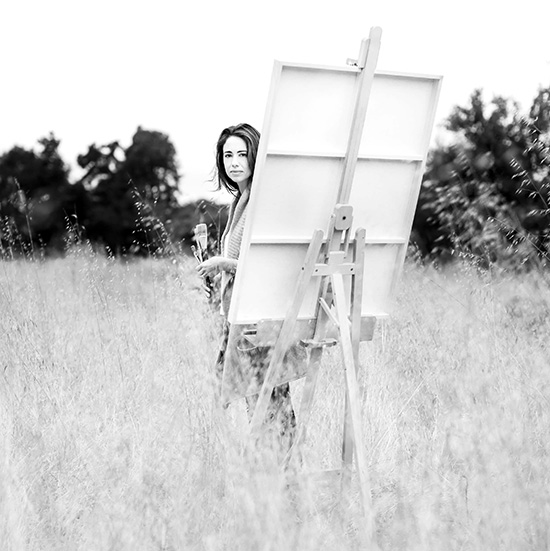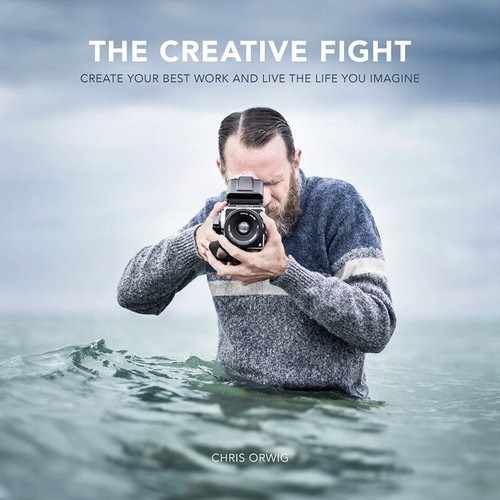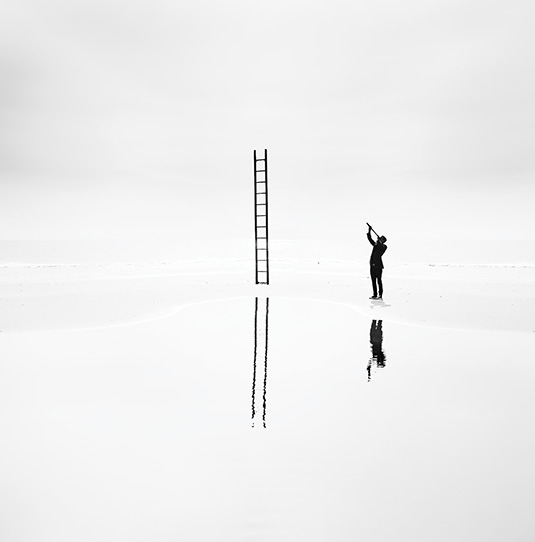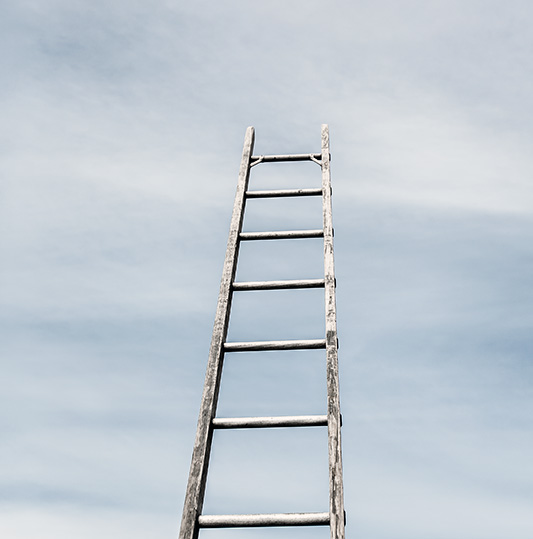Chapter Twenty-Seven. Distracted by Distractions

The blank page. The empty canvas. The vacant screen. Some people find the moment before creativity so unbearable that they quit. Rather than endure the uncertainty of making something new, they look at their phones. And that’s just one of many things vying for our attention. Unable to take it all in, we split our attention into small fragments to handle everything that is coming our way.
Worried what we might miss, we continually search, scour, and scan. We check our devices nonstop, never turning them off. Linda Stone calls this “continuous partial attention,” and it leads to worry and an artificial sense of constant crisis that permeates our lives. So we feel overwhelmed. And with so much to process, we are forced to become experts in not going very deep.
The Pause Between the Notes
The constant influx doesn’t leave any time, focus, or energy to create. Like aging athletes who stop practicing their sport or turn to unhealthy eating habits, we become out of shape. Not wanting to admit defeat, we try to do it all, which depletes us even more. This half-baked and partially attentive approach doesn’t lead to living life as if it matters. Climbing the ladder and living life to the fullest degree is an art that doesn’t include being distracted all the time.
Almost every form of art requires focus and thought. I like to think of art as occupying the space between the noise. I love how the renowned musician Artur Schnabel reflected on his craft: “The notes I handle no better than many pianists. But the pauses between the notes—ah, that is where the art resides.”
To create art, or to make life a work of art, is to get beyond the surface and to connect in a deep and meaningful way. As Aristotle argued, “Art isn’t about the outward appearance but the inner significance of things.” The best art connects, resonates, and makes us feel. It stirs up our senses and provokes change. And I’m not just talking about art in the traditional sense. Art isn’t only painting, photography, or dance. Art can be anything that’s done with the right intent. You can restore a car or make a sandwich as if it were art. And sure, there are “capital A” and “lowercase a” art. But that isn’t the point. The point is that most of us have abandoned art because we have wrongly believed that it was the domain of someone else.
Art isn’t just for them; it’s also for you. Regardless of your age, gender, or skill, you have artistic potential. Artists aren’t only those with cameras, pens, or brushes in their hands. There is an art to relationships, commerce, war, telling jokes, and grilling in your backyard. The author Seth Godin nailed it when he said, “An artist is anyone who uses bravery, insight, creativity, and boldness to challenge the status quo. An artist takes it personally.” Creating art is not about materials but about your aim. And the greatest work of art you should pursue is making your life more than it is.
Habitually Distracted
Unfortunately, the art of living isn’t easy to master. And constantly distracted by anything shiny and new, our attention spans have all but disappeared. As T. S. Eliot said over fifty years ago, “We’ve become distracted from distraction by distraction.” Flash-forward to today and it’s more complex. We have become habitually distracted. We walk around in public checking our phones. We answer a text while someone else speaks. Distractions have become the norm. We are all guilty to a greater or lesser degree, and we all have some room for growth.
If Aristotle was right and “we are what we repeatedly do,” then we are in trouble. Deep trouble. All these distractions are killing our creativity. As the Buddhist teacher Judy Lief suggests, “Distraction is the very foundation of ego, the way we protect ourselves against both the pain of life and the open space of awakened mind.” When we are bored, frustrated, angry, or sad we reach for our phones. This cuts us off from key emotional states that could potentially help us create. And it might be that all this distraction is holding us back from creating our best work and leading better lives.
It doesn’t really matter to me how many times a consumer checks her favorite social media site. But it does matter to me if you are a creator. If you are a student of the creative life—and if you want to be a creator—you should care as well. For creators, the more distractions there are, the less significant the work is. If you want to create something worthwhile, you have to step out of the fray and practice your craft—the cook to the kitchen, the scientist to the lab, and the writer to the page. Otherwise, the habit of distraction can even change the way you think. Neuroscientists tell us that repetitive actions form habits and that habits mold the very structure of the brain. The more we practice a habit the stronger it becomes. As the scientists like to say, “Neurons that fire together, wire together.” After multiple years of giving in to distraction, imagine how strong the nerve wires have become. The neural pathways are hard to resist.
Switch-Tasking
In our always-connected world, multi-tasking seems like the only way to survive. But our multi-tasking has gotten out of hand. A better word to describe what we do is “multi-switch-tasking” because of how quickly we change what we do. And this behavior is praised as the new way to thrive. It’s not uncommon to hear the self-congratulatory cliché “I’m killing two birds with one stone.” But stop to think about that phrase. Killing birds is cruel and unkind. When I was a young boy, I accidentally killed a bird with a BB gun. As I watched its life pour out onto the dirt, I felt so horrible and ashamed. I think of that bird every time I hear someone use that cliché. Yes, productivity is good, but not if it takes away life.
When we are distracted we stare at the world with vacant eyes. And it used to be that a vacant stare meant that you were ill. Now it just means that the phone in your pocket buzzed. Socially, being partially present has become OK. We all switch-task, so we don’t mind it so much when others do as well. When families sit down to eat, some do so without looking each other in the eyes. When one person pulls out a phone, others can do the same. And who’s to blame? It’s hard to resist all the distractions in our frenetic and fast-paced lives. Life is more complicated than it used to be, at least that’s what we tell ourselves. But it isn’t true.
Double Doors and Tortoise Shells
Distractions have always vied for the attention of our hearts and minds. The sirens in the Greek epic poem the Odyssey tried to lure sailors, of course. So Odysseus made his men put wax in their ears. And throughout history, distractions have come in many forms. In the mid-1800s, distraction came to one man by way of noise.
Charles Dickens was a struggling author who couldn’t “hear himself think,” so he hired a carpenter to help. On the entrance to his upstairs study, he had the carpenter install two thick doors. Dickens knew that nothing is more dangerous to the creative spark than distraction and distress. So he blocked out the noise by creating a barrier that was twice the size of most.
A few thousand years earlier, Buddha was worried about his followers and their fragmented minds. So he taught them ways to cultivate mindfulness that comes from within. Whether we go back a few hundred or a few thousand years, distractions have always been present.
The humorist John Cleese (of Monty Python fame) said, “We don’t know where ideas come from, but we do know that they don’t come from a laptop.” For Cleese, the key to creativity is to get into a “creative state of mind.” The best way to do this is to create space and time that is free of interruptions. He calls this the “tortoise enclosure” of the creative mind. Cleese explains, “If you’re racing around all day ticking things off lists, looking at your watch, making phone calls, and generally just keeping all the balls in the air, you are not going to have any creative ideas.”
In order to generate more creative thoughts, we need to climb up a simple ladder and retreat. Away from the responsibilities of day-to-day life, the creative mind flourishes. We need to take time to relearn how to concentrate and think. That’s one reason that meditation has become such a widespread practice in the western world. Alain de Botton sizes the problem up this way: “Relearning how to concentrate is one of the great challenges of our time. To sit still and think, without succumbing to an anxious reach for a machine, has become almost impossible.” And it’s not just concentration that we need—we need focus, clarity, mindfulness, and empathy if we want to become more creatively alive.
Exercise
Here are three ideas to regain some clarity and get the creative juices to flow. Modify these suggestions to suit your own needs.
IDEA 1. DIGITAL SABBATH
Select one day a month to live without the help of an electronic machine. Turn off and tuck away your phone, computer, iPad, and TV. Commit to a complete day without devices and plan to do something else—ride your bike, hike, hide, draw, or build something out of wood.
IDEA 2. 30-MINUTE BREAK
Schedule a regular break from your devices, computer, or phone for 30 minutes once a day for a week. Consider this your “lunch break” from the constantly connected world.
IDEA 3. MEDITATE
Science strongly supports the idea that meditation benefits the brain and body. The simple act of meditation can help you become more mindful, reduce anxiety, improve relationships, and give you a creative edge. Try it out for one week. The app I use and recommend is called Headspace. Download it and your first 10 sessions are free. Learn more at headspace.com/science.




